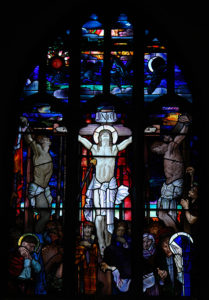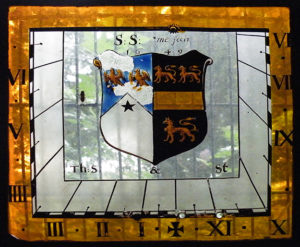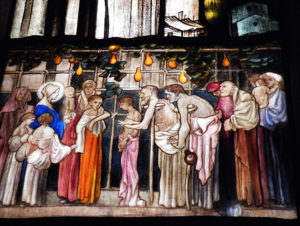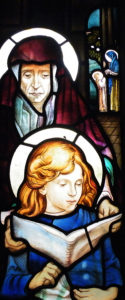
Frank Brangwyn, St. Mary the Virgin Church, Bucklebury, Berkshire
20th Century
In-situ cleaning to all of the stained glass windows in the church, removal of old protective glazing systems from windows nII and sII, and the design, manufacture, and installation of a new bespoke externally ventilated environmental protective glazing system, to windows I and nIV.
Window I is entitled The Crucifixion, made in 1912, and Window nIV is a Nativity, made in 1917. These two windows plus 2 smaller contemporary lancet windows nII and sII have all been designed by Frank Brangwyn (1867-1956), and executed in stained glass by James Sylvester Sparrow. An internationally recognised British artist within his own lifetime, Brangwyn was at his peak in the 1900 – 1920’s, and his work can be seen in galleries and private collections throughout the world. He was perhaps more well-known abroad than in Britain, although recently there is a great deal more interest in his work. An extremely versatile artist and designer, as well as painting on canvas, he completed murals for public buildings, notably The Rockefeller Center, New York. He also designed in many and varied disciplines – jewellery, metalwork, carpets, furniture, pottery, book illustrations, posters, and stained glass to name a few. The Brangwyn stained glass windows at Bucklebury were in a sound condition and only needed a light in-situ clean, as did the other window in the church. All were cleaned on the inside, whilst only selected ones were necessary on the outside. The 2 smaller lancet windows in the north and south chancel had a tired and dated protective external cover. This coating was once a clear plastic sheet, but had yellowed over time. A much more bespoke, functional, and sympathetic environmental protective glazing system was introduced by HWG, to all four Brangwyn windows. Interestingly, another window at Bucklebury contains the ‘Bucklebury dial’ – a stained glass sundial, incorporating the coat of arms of the Stephens and Stone families. Only 30cm x 30cm in dimension, and dated 1649, it has a very convincing fly painted on it, to remind us of how times ‘flies’.






